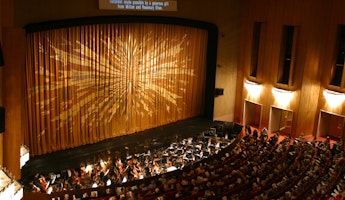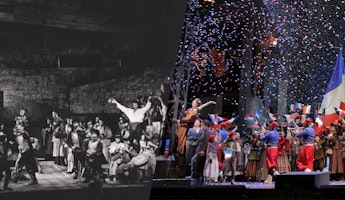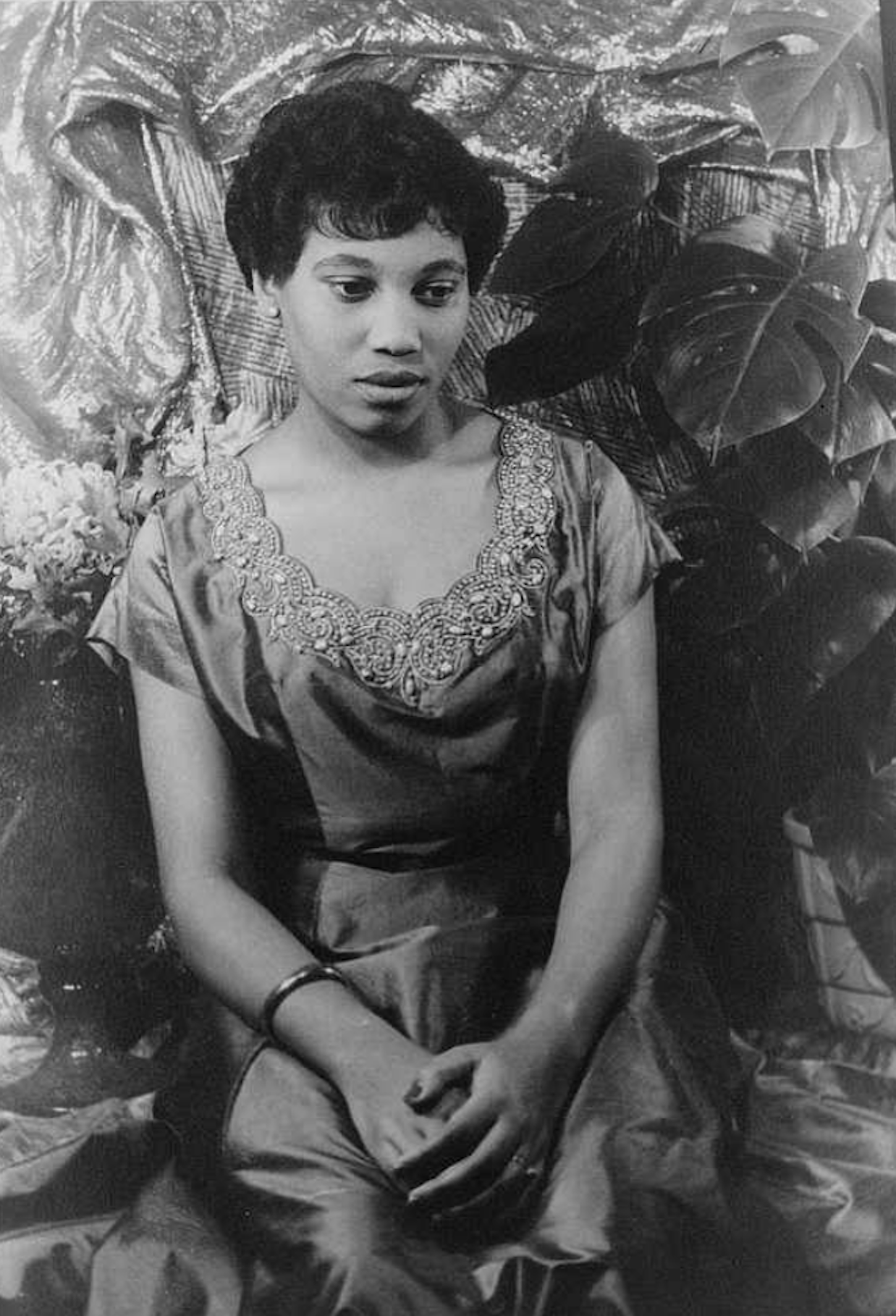Blog
March 19, 2024
The Women Who Shaped Opera
Believe it or not, there was a time when only men were allowed to perform on the stage (or in church!). And while opera may have been created by men, it’s women who have truly laid the groundwork and shaped the shows and characters we love. Just think, how many of your favorite opera characters are women? How many of your favorite arias have been sung by women? For Women’s History Month, we’ve been spotlighting on Instagram and Facebook some of the wonderful women that are thriving in the artform today such as Rhiannon Giddens, Du Yun and Gabriela Lena Frank. These women are continuing to redefine opera and bring underrepresented stories to the stage, but we also want to take the time to highlight and remember a few of the many women from opera’s history whose talents made a major impact during their day and helped shape opera to the artform we love today.
Francesca Caccini
Francesca Caccini is most remembered for writing the earliest surviving opera written by a woman. Born in Florence, Italy, in 1587, she was taught by her father, Giulio Caccini, one of the original creators of opera. She began singing with her sister at 14, which led to her family forming a choir. While singing with her family, Caccini was also hired by the Medici court where she served as a teacher, chamber singer, rehearsal coach and composer for chamber and stage music. Her family choir would break up after her sister got married, but she quickly became the highest paid musician in the court.
While Caccini was a prolific composer, most of her work has been lost to time, including her first opera titled La Stiava. Her only surviving opera is La liberazione di Ruggiero. Opera was still in its earliest days; La liberazione di Ruggiero premiered in Venice in 1625, just 27 years after the very first opera, Jacopo Peri’s Dafne. La liberazione di Ruggiero was one of the very first Italian operas to be performed outside of Italy, helping to start the spread of opera all around Europe.
Caccini passed along her musical knowledge to other women in her time, including her own daughter and the Medici princesses. Caccini stopped serving the court in 1641, the last mention of her in public record. Despite her importance in the history of opera, we can only make guesses as to what her fate was. It’s most likely that she passed away between 1641-1645 or that she lived longer but had remarried. While most of her work may be lost, we’re happy to remember Caccini’s legacy and all she did to help get opera on its feet.
Maria Malibran
It is a rare feat to capture the admiration of Rossini, Chopin, Liszt, Mendelssohn, and Bellini but to Maria Malibran those legendary composers were her fans. While we unfortunately won’t have the chance to hear Malibran sing, those who did fell in love with her voice immediately, and after her passing some, including the daughter of Mark Twain, worshipped her like a saint. Her vocal range far exceeded that of her contemporaries and most singers today, as she could easily cover three octaves with her voice compared to the usual two octaves. By all accounts, she was an incredibly powerful singer with a charismatic presence, and she also composed about 50 songs. But her life was far from a happy one.
She was the daughter of celebrated tenor Manuel Garcia, who Rossini created the role of Count Almaviva in The Barber of Seville for. At a young age, she began vocal training with her father, whose inflexible and tyrannical style brought Malibran to tears multiple times. While emotionally traumatic, the lessons resulted in an astonishing vocal technique, and she made her professional debut at the King’s Theatre in London when she was 17. That same year, Garcia took his family to New York to establish an Italian opera troupe. Opera had only been heard in the states for a few decades at this point, so Malibran easily stood out in some of the most famous Rossini and Mozart roles.
While the move saw great success for her career, she was now trapped in her father’s care and desperately wanted to escape. She married a banker 28 years her senior and refused to sing in her father’s company anymore. Her new husband went into terrible debt and most of Malibran’s income went to paying off his bills. After their marriage failed, Malibran returned to Paris where she enjoyed much success thanks to Rossini’s aid. Unfortunately, her father was still on Rossini’s good side, and she had to endure being cast opposite him as the romantic lead in Otello and The Barber of Seville.
Malibran remarried in 1829, much more happily, but her story has a tragic ending. In 1836, she was thrown off her horse while horseback riding in London. Despite her serious injuries, she refused to see a physician and continued performing. After several agonizing weeks, she died, along with her unborn child. While she lived a tragic life, there was still joy and accomplishments throughout that are to be celebrated such as being one of the first opera stars in America.
Leontyne Price
To end our list, let’s look at a legend that we’re happy to still have with us. Leontyne Price was the first African American opera singer to become an international superstar. Her long association with the Metropolitan Opera began in 1953, when the Met’s general manager Rudolf Bing asked her to perform at the Met Jamboree fundraiser. She sang the iconic aria “Summertime” from Porgy and Bess, an opera she had already performed around the world with smaller opera companies.
That performance helped get Price’s foot in the door, but her opera career wouldn’t truly start gaining momentum until 1955 when she sang the title role in Tosca for the NBC Opera Theatre with music director Peter Herman Adler. This made her the first black singer to sing a leading role on televised opera, and her momentum kept going as she sang Pamina in The Magic Flute, Madame Lidoine in Dialogues of the Carmelites and Donna Anna in Don Giovanni all for the NBC Opera Theatre. Dialogues of the Carmelites became the first opera she performed with a major opera company when she was cast in the San Franciso Opera’s production in 1957.
If you know anything about Price, you probably know her signature role is the title role in Verdi’s Aida. She first sang this role in a concert performance with the Philadelphia Orchestra. But her chance to truly blow everyone away with her portrayal of the iconic princess arrived in San Francisco in 1957 when she substituted for Antoinetta Stella. That run of performances included a tour to Los Angeles, where Price sang Aida at the Shrine Auditorium. Her success led to a string of triumphs in Europe, performing Aida at the Royal Opera House, the Vienna State Opera and the Arena di Verona.
Rudolf Bing had wanted Price to play the role at the Met since 1958, but Adler advised Price to have more roles under her belt so she could come to the Met as a true prima donna, instead of being stereotyped in the role of an Ethiopian slave. This strategy proved to be a success, for in 1961, the Met hired her for several roles: Leonora in Il Trovatore, Aida, Donna Anna, Liu in Turandot and Cio-Cio-San in Madama Butterfly. Her debut there as Leonora caused one of the longest standing ovations in Met history, lasting between 35 to 42 minutes (depending on who you ask).
Price’s rise to become the opera superstar that we know today was unstoppable at this point. She was so popular that when she joined the Met’s spring tour in 1962, the Met refused to perform in segregated opera houses, leading to many opera houses in the South discarding that rule so they could have Price perform. By 1964, she was paid $2,750 per performance, a fee comparable to those paid to Joan Sutherland, Maria Callas and Renata Tebaldi and only beaten by the veteran Wagnerian Birgit Nilsson. Price retired from opera in 1985 and retired from concerts and recitals in 1997, although she appeared one last time for a 9/11 memorial concert at Carnegie Hall. Price’s career proved that even in an art form that had been around for centuries, the right person could come along and shake the industry up.








/03-cosi/_dsc0996_pr.jpg?format=auto&fit=crop&w=345&h=200&auto=format)

















